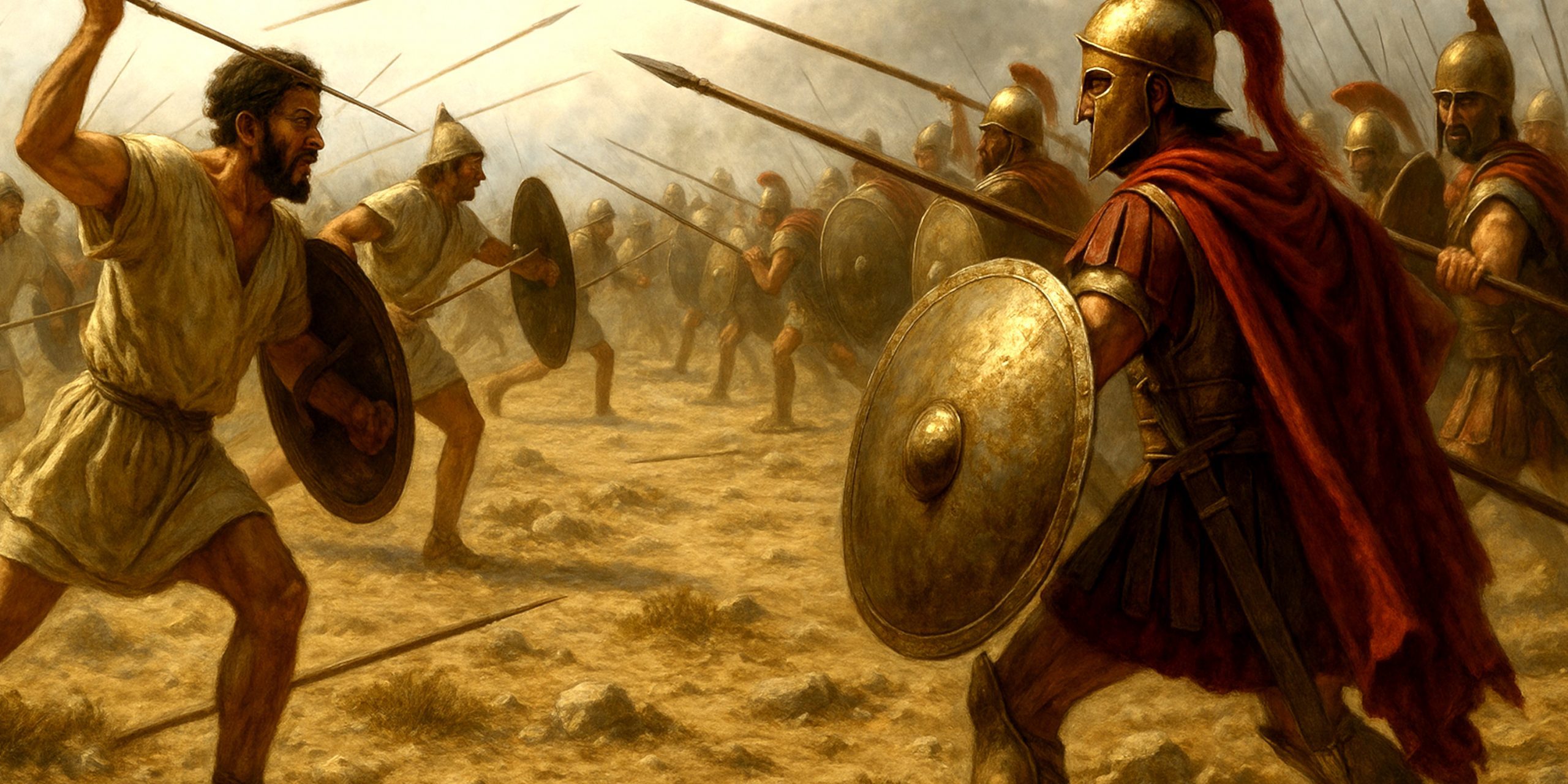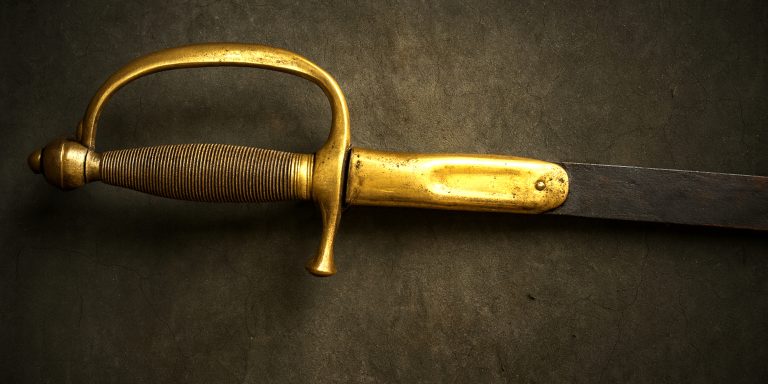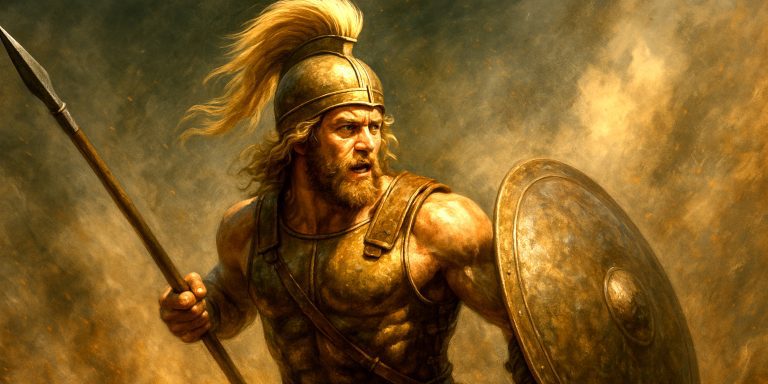
The Battle of Lechaeum was one of those sharp shocks in Greek warfare when an old power learned the hard way that the battlefield had changed. In 391 BC, near the port of Lechaeum, an Athenian light infantry force led by the capable Iphicrates tore apart a Spartan mora. As a historian, I have always enjoyed this one, partly because it rattled the Spartans so thoroughly and partly because it shows how innovation can take a very smug opponent by the shoulders and give them a good shake
The battle took place during the Corinthian War, a messy conflict sparked by shifting alliances and bruised egos among the Greek city states. Lechaeum was Corinth’s western harbour, heavily contested and strategically important. The Spartans expected a routine escort mission. Instead, they met an enemy who refused to play by the old hoplite rulebook.
Forces
The opposing sides fielded troops with very different strengths. This contrast explains almost everything about the outcome.
Summary Table
| Side | Commander | Estimated Strength | Core Troops |
|---|---|---|---|
| Athens | Iphicrates | c. 600 to 800 peltasts, with light support | Peltasts, light infantry, a few hoplites |
| Sparta | Unknown polemarch of the mora | c. 600 hoplites | Hoplites from a full Spartan mora |
Arms and Armour
Athenian Forces, under Iphicrates
Iphicrates’ troops were peltasts trained to fight fast and think faster.
Weapons
- Javelins as the main arm, used in quick volleys then followed by rapid withdrawal.
- Short swords for close quarters, typically xiphos designed for stabbing.
- Some carried kopis, a curved cutting sword ideal for finishing blows when an enemy was disorganised.
Armour
- Very light protection. Linen cuirasses for a few, but most relied on mobility.
- Small crescent shields.
- Loose boots or none at all, which struck Spartans as uncivilised until they were sprinting after men who were already halfway down the hill.
Spartan Hoplite Mora
The Spartans turned up with what they always turned up with, confident as usual.
Weapons
- Long spears as the primary arm.
- Short xiphos for emergencies once the spear line broke.
Armour
- Bronze cuirasses.
- Round aspis shields.
- Corinthian style helmets that were excellent on a parade ground and slightly less helpful when being peppered with javelins from every side.
Leaders
Athenian Command
Iphicrates had a talent for upsetting the status quo. He refined peltast tactics, drilled his troops to fight in a rhythm of approach, throw and withdraw, and used terrain like an additional weapon.
Spartan Command
The Spartan polemarch seems to have assumed the Athenians would behave like proper Greeks, which was his first mistake. His second was continuing the march without adapting to the swarms of light infantry around him.
Course of the Battle
The Spartan hoplites were escorting allied troops back to Lechaeum when Iphicrates spotted his chance. He moved his peltasts into position and began a persistent pattern of harassment. The hoplites pushed forward, but every attempt to close with the enemy failed. Once they advanced, the Athenians ran. Once they turned back, the Athenians closed in again.
The Spartans grew tired, angry and increasingly disordered. The peltasts simply increased the pressure. Eventually the mora broke apart and the Athenians rushed in to finish the job with javelins and blades. For a force that prided itself on discipline, it was a humiliating rout. A large part of the Spartan unit was cut down before it reached safety behind Lechaeum’s walls.
Archaeology
Archaeology around the western harbour of Corinth has revealed layers of military and harbour activity, though direct finds linked to the battle are understandably slim. The topography, however, still gives a strong sense of why Iphicrates’ tactics worked. The shallow rises and open ground north of the harbour favour quick-moving light troops and challenge the tight cohesion of hoplites.
Corinthian pottery shards and fragments of spearheads from the era contribute to the reconstruction of Corinthian War combat life, though none can be pointed to as coming from the actual clash. As usual with Greek battlefields, the land remembers more in shape than in artefacts.
Timeline
Before the battle
Athens supports Corinth. Spartans operate aggressively in the area to intimidate local allies. Iphicrates commands Athenian peltasts stationed nearby.
Early 391 BC
Spartan mora escorts allied troops along the Lechaeum road. Iphicrates shadows them.
Initial contact
Athenian peltasts begin hit and run attacks, drawing the hoplites out of formation.
Main engagement
The harassment intensifies. Spartan spear lines fail to catch the attackers and become stretched and fatigued.
Collapse
The Spartan mora breaks. Athenians close in, killing large numbers as they retreat.
Aftermath
Shock spreads throughout Greece. Athenians celebrate one of the rare occasions where hoplites are beaten convincingly by lighter troops.
Contemporary Voices
Xenophon gives the clearest surviving account, noting with a slightly restrained delight that the peltasts were able to attack repeatedly because they could outrun the Spartans and choose the moment of combat. His phrasing suggest he understood the deeper implications, even if he did not wish to embarrass the Spartans too openly.
Plutarch, writing later, praised Iphicrates for turning light troops into a decisive arm, a judgement that still holds weight today.
Legacy
The Battle of Lechaeum was small in scale but catastrophic for Spartan prestige. It proved that rigid hoplite lines could be defeated by mobility, patience and relentless discipline. The sight of a Spartan mora being run in circles left a lasting bruise on their reputation.
For historians, the battle marks a turning point in Greek tactical thinking. It shows the rise of professional light infantry and the slow erosion of the old hoplite ideal. For Sparta, it was a cold reminder that the world was changing and not in a way they found comfortable.
Watch the documentary:



